Reviews
Nicholas Ray
USA, 1952
Credits
Review by Ian Johnston
Posted on 23 August 2008
Source Warner Brothers DVD (Film Noir Classic Collection Vol. 3)
Categories The Mystic: The Films of Nicholas Ray
For many, audiences and critics alike, On Dangerous Ground is a problematic movie. The sticking point is its split structure, the first third in the familiar setting of the rain-slicked streets of the film noir city, the rest in the wide snowy expanses of the countryside. Audiences and reviewers of the day were disconcerted by the way the change in setting was also reflected in how the very nature of the story changes. What starts out as a hard-edged crime thriller, centred on the violent personality of detective Jim Wilson (a superb performance by the ever—reliable Robert Ryan—why wasn’t he ever a greater star?), turns into something gentler and more introspective, namely the theme of how a violent, self-loathing man can be redeemed.
When On Dangerous Ground was made, RKO was in the hands of Howard Hughes, and it’s a sign of the problems the film’s narrative structure posed that Hughes continued tinkering with it for a year. (Admittedly, this was pretty par for the course for Hughes irrespective of how any film had turned out.) But even today, as perceptive a writer as James Harvey in his Movie Love in the Fifties (which includes a substantial section on Ray) has little time for the film, praising the early “classic noir” section of the film as the best part and ignoring the rest. In fact, this seems to me a misreading and a critical misjudgement. The core to On Dangerous Ground lies in the countryside setting, the site of the film’s emotional force and thematic meaning. It’s also where the best scenes are too, above all those of Jim and vengeful father Walter Brent struggling across the empty stretches of snow.
In many ways On Dangerous Ground is a companion-piece to In A Lonely Place, the film that preceded it. In both films the male protagonist’s propensity to violence verges on the psychopathic and a romantic relationship offers a way out of his psychological impasse. Perhaps we’re more convinced by the downbeat ending to In A Lonely Place where, even though Dixon Steele is proven innocent of the suspicions of murder that the noir plot has cast on him, the violent side to his nature that he has revealed in the process destroys his relationship with Laurel and condemns him to loneliness. Still, there’s a pleasing symmetry to the way On Dangerous Ground now takes a similar character and offers a very different outcome.
The film plunges us straight into the world of the dark, violent noir city—during the opening credits looking out through a car windscreen that in a later scene is revealed to be the patrol car shared by detectives Jim Wilson, Pete Santos, and Pop Daly. (With the overlay of a Bernard Herrmann score you can’t help but wonder if there was some influence on Martin Scorsese when he was making Taxi Driver.) A sense is given of the violence that awaits these cops in the world outside with repeated scenes of both Santos’ and Daly’s wives handing them their guns as they prepare for their shift. But the delay in introducing Jim Wilson is critical in portraying him as different from his two partners. Whereas we see them in a supportive and loving home life, Jim is alone in his single room, gun already strapped on, gobbling down his food as he looks through police mug shots. His work is his life; there’s nothing else.
The investment of his life in his work as a police detective has twisted Jim up inside, filling him with disgust, anger, and self-loathing, feelings that are all bottled up inside with no release but for his outbursts of violence. Unlike his partners, he has no perspective on the criminal world that they deal with every day (“What kind of a job is this anyway? Garbage. That’s all we handle, garbage!”), and his disgust is projected both within and without. These early scenes sketch the grubby world Jim works in—the alcoholic informer, the underage prostitute, the sleazy bar owner that tries bribing him (a cameo by the film’s scriptwriter A.I. Bezzerides)—and the violence that seethes within Jim. When an innocent citizen is harassed by them and mutters “Dumb cop!” at Jim, he is barely restrained by his partners from attacking him. He’s sensitive to even the most innocent of casual comments—watch how he spins around, hurt and silent, on his stool when the drugstore girl jokes about the impossibility of “me going out with a cop.”
Jim’s behaviour gets even more extreme when he actually has to deal with characters from the criminal world. First, there’s the sultry Myrna, boyfriend of Bernie Tucker (friend of the cop killers Jim and his partners are tracking down—a plot element the film barely seems concerned with), who adds a perverse sexual mix to what we’ve seen so far. She practically taunts Jim into beating the information out of her, which she plays out as a sexual come-on—“You’ll make me talk, you’ll squeeze it out of me with those big strong arms”—which Jim responds to with a menacing “That’s right, sister.” But the significance of the encounter with Myrna rests as much in its moral commentary on Jim’s character. Jim is so turned in on himself that he has lost any concern for other people. Myrna is now under physical threat for the information she has given him, but he’s simply indifferent to this. As partner Pete Santos comments to him here: “You sure don’t care about people, do you?”
With Bernie Tucker the violence is racked up a further degree, with, again, an underlying current of sexual sadism. Bernie is lying on his bed when Jim bursts into his room and, even with Jim towering over him, Bernie repeatedly taunts Jim to beat him. This provokes Jim into a tirade, a paroxysm of conflicted self-hate and uncontrollable rage: “Why do you make me do it? You know you’re gonna talk. I’m gonna make you talk. I always make you punks talk. Why do you make me do it? Why? Why?”
The actual beating is elided, although we do see Jim attacking Bernie again in the patrol car at the station, but it’s clear that Jim is trapped in an ever-intensifying cycle of violent behaviour. He’s lonely and isolated, cut off from other people, consumed with pent-up rage and self-hate, and unable to break out of his entrapment—symbolised (a little too neatly, perhaps) by his desperate but vain attempts to wash his hands when he returns to his lonely little room. His crazed beating of one of Myrna’s subsequent attackers, from whom Pop Daly has to pull him off, is the ultimate sign of how far Jim has lost control of himself and how far Jim is psychologically and spiritually lost.
Jim’s posting out of town literalises his loneliness and isolation. He’s sent into the countryside to assist in tracking down the killer of a young girl, although for his police captain this is as much to get Jim out of town until controversy over his recent violence dies down. The change in environment is evocatively handled by Ray, the transition marked by face-on shots of Jim’s face as he is driving, over-the-shoulder shots of the landscape outside, and finally point-of-view shots out the windscreen of the road ahead. The roadworks that temporarily halt Jim’s journey at mid-point reflect the “blocked’ nature of Jim’s psychological state; the increasingly empty expanses of landscape before him bring to the fore the sense of lack, of what is emotionally missing in the loner figure that Jim plays.
This wide, snowy rural landscape is the background against which play Jim’s encounters with two key figures, Walter Brent and Mary Malden. Brent is the father of the murdered girl and he becomes here Jim’s alter ego, his dark mirror-image. All Jim’s rage and violence finds expression in Brent in a more basic and uglier form. Brent’s character is simply and only driven by his urge for violent revenge, which right from the start is positioned as opposed to Jim and hence a sign of how Jim is going to change: “There won’t be any of your city stuff. No funny trials. No sob sisters. I’m just gonna empty this shotgun in his belly.”
Brent’s excessive, violent drive is externalised in his obsessive pursuit through the snow, with Jim struggling to keep up. There’s no concern for anyone else, such as the wounded car owner (his car is stolen by the girl’s killer)—although, significantly, and in contrast to his behaviour in the city, Jim does pause in a show of concern—and, later, when their car skids on the icy road and overturns, Brent simply abandons him.
When Jim and Brent first approach Mary’s isolated house, their initial conversation with the off-screen Mary is filmed as a two-shot, with the two of them facing and speaking to the camera, a visualisation of the two sides to Jim’s character. As they explain they’re looking for the girl’s killer (they’re yet to discover that he is Mary’s younger brother Danny), it’s as if these two sides are warring with each other before our eyes. Jim is courteous and diplomatic, adopting a gentle tone with Mary, while Brent is rude, blunt, aggressive, and brutal. Later, after Jim has his long conversation alone with Mary, Brent returns from another obsessive search outside and, refusing to believe Mary is blind, moves to strike her, only stopped by Jim wrestling him to the floor.
Jim protects Mary here, just as, under her influence, he’ll try to protect Danny, actions that are in dramatic contrast to his behaviour in the city. Obviously, Mary’s blindness is there to parallel Jim’s moral/spiritual blindness, his entrapment in his own violent world and his inability to see beyond that world and to acknowledge and appreciate the world of family and relationships that Pop Daly proposes to him. Her blindness is also an image that reflects Jim’s isolation but that at the same time, in keeping with the film’s humanist themes, offers a way of successfully living beyond that isolation.
Mary is associated with symbols of nature (brought into her life by Danny) that reinforce the contrast the film sets up between the urban and the rural. This is one of a series of binary contrasts On Dangerous Ground is structured around—male and female, day and night, light and dark, blindness and seeing, the married and the celibate life, violence and compassion—although it has to be said that the association of the country with positive imagery is not so straightforward. It’s here after all that we see in Brent the most brutal manifestation of violent aggression and on the other hand in the city there are specific precursors to the nature theme (Pop Daly’s rose garden) and to the almost paternal relationship Jim tries to establish with Danny (seen in Jim’s interaction with the newspaper boy, but tellingly there Jim still cuts himself off at the end of the scene).
Mary’s house is decorated with nature motifs: wooden carvings, some greenery hanging down from overhead, a huge branch of a tree that’s set upright in the living room. It’s in the presence of these natural objects that Mary and Jim’s encounter takes place. Here, the act of touching becomes the central physical action. Jim makes the resonant movement of touching the branch beside him when Mary asks his name and she gives recognition of her sense of Jim’s loneliness by an exploration of Jim’s face with her fingers. It’s as if with her touch she breaks through the shell that Jim has grown up around him.
From now on Jim is committed to protecting Danny on Mary’s behalf. Danny himself is a further refinement on the nature theme, with his constant association with the animal. He’s hunted prey in his early scenes where a clear view of him is consistently denied us—instead he’s a vague figure dropping from the trees or scuttling in the dark of the cellar when Mary brings him food. When we do finally get to see him, he’s revealed as a nervy, confused, simple-minded boy, but Jim’s attempts to establish a bond with him—the first sign of the transformation effected within Jim himself—come to naught with the sudden incursion of Brent, Jim’s dark shadow, who fights with Jim and literally chases Danny to a tragic death.
Still, the film grants Brent a note of grace, too. Danny’s death seems to drain him of his vengefulness. This is not the satisfaction of a goal attained, of an eye-for-an-eye justice achieved on behalf of his dead daughter, but rather the humble recognition of Danny’s own humanity. “He’s just a kid. That’s all he is,” says Brent, and cradles the boy in his arms in order to carry him into a nearby house. Jim is now superfluous and ineffectual, wanting to help and comfort Mary but uncertain as what to do. This uncertainty is reinforced by the contrast between Robert Ryan, bulked up in his coat and hat, and smaller-statured, more delicate, but here more determined Ida Lupino (playing Mary). In the end, Mary rejects Jim. As much as she might need his assistance, especially when she falls in her home, knocking over her household symbols of nature, she still too much senses Jim’s own psychological damage: “Why don’t you go away? The way you are, I don’t see how you can help anybody.”
This is the point at which Ray intended to end On Dangerous Ground. Such an ending clearly parallels that of In A Lonely Place, making it another portrait of a damaged male who’s unable, because of the flaws in his own psychological makeup, to respond adequately to a woman who is otherwise his ideal companion. Yet the film’s studio-imposed ending in fact makes greater emotional sense. In the film as it stands, we have another set of dissolves, point-of-view shots first of the snowy country road and then of the rain-slicked city street, with a cut to a close-up of Jim’s achingly sad face. Two conversations play in his mind, Mary’s talk of loneliness, and Pop Daly’s much earlier advice to Jim that “to get anything out of life, you gotta put something in it. From the heart.”
Pop and Mary are the two characters that identify what is wrong with Jim, and the film traces a passage from Pop to Mary and then to Jim’s own process of transformation. In this sense the film’s ending of Jim turning back from the city to return to Mary, while sentimental, is the final necessary link in this chain. Again, the motif of touch is central, as it has been throughout, from Jim’s hand on the tree branch in Mary’s living room; to Mary’s twice running her fingers over Jim’s face as an act of identifying who he is; to Jim’s hesitation to touch her, in his uncertainty as to how to comfort her; and then to this final scene with its close-up of their two hands meeting on the staircase banister. In the film’s final shot, the long slow pan over the snowy landscape, our sense of the meaning of that landscape has changed. No longer a symbol of Jim’s isolation and struggle with the dark forces within himself, that shot is now epiphanal, a simple coda to the transformation Jim has undergone.
More The Mystic: The Films of Nicholas Ray
-
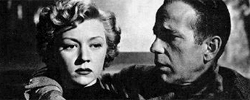
In A Lonely Place
1950 -
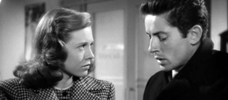
They Live By Night
1948 -
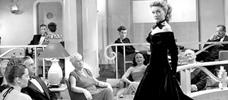
A Woman’s Secret
1949 -
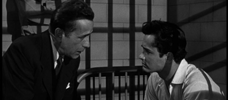
Knock on Any Door
1949 -

Born to Be Bad
1950 -
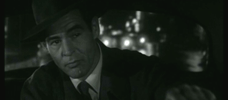
On Dangerous Ground
1952 -
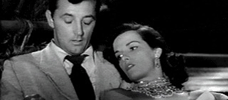
Macao
1952 -
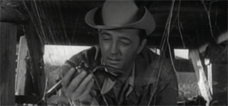
The Lusty Men
1952 -
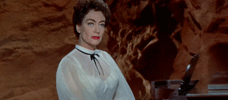
Johnny Guitar
1954 -
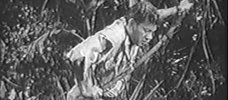
High Green Wall
1954 -
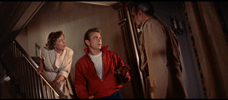
Rebel Without a Cause
1955 -
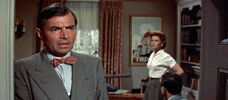
Bigger Than Life
1956 -
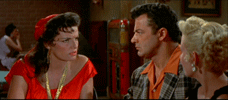
Hot Blood
1956 -
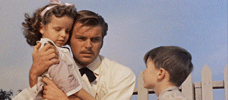
The True Story of Jesse James
1957 -
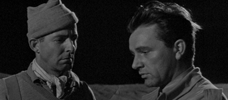
Bitter Victory
1957 -
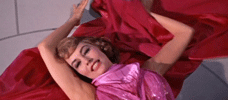
Party Girl
1958 -
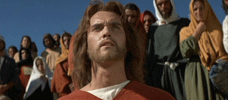
King of Kings
1961 -
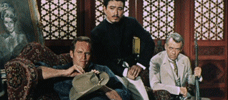
55 Days at Peking
1963 -
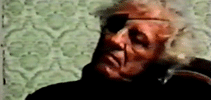
The Janitor
1974 -
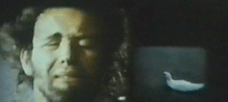
We Can’t Go Home Again
1973-1976 -
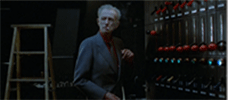
Lightning Over Water
1980
We don’t do comments anymore, but you may contact us here or find us on Twitter or Facebook.



